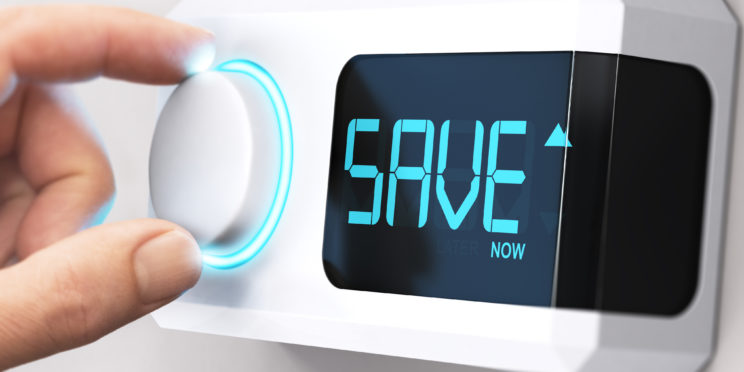There are many ways to save electricity in an office, and most can be made with small changes to employee behavior. Often, simply letting your staff know that you intend to be more conscious of energy costs and ways to save is enough to make them aware and conscientious about it, too!
Purchase energy-efficient office equipment. Before you buy or lease office electronics, check to see if they are ENERGYSTAR-rated. An ENERGYSTAR-rated appliance has been evaluated and deemed energy-efficient, which can save you money and help you manage your small business energy costs, especially in the long run.
Program your thermostats. This is one of those office energy-saving tips that is especially relevant for a 9-5 workplace. You don’t need to heat or cool a workplace after everyone has gone home for the night. Even if your team’s hours vary, using programmable or smart thermostats to manage the temperature during “off” hours can make a big difference.
Turn off lights when not in use. It might seem like a no-brainer, but in a typical office, lights stay on in areas like break rooms, bathrooms, or conference rooms, even when those spaces aren’t being used. Sensor lights can help to keep the lights on when needed, but off when they’re not.
Use energy-efficient light bulbs. It’s one of the easiest and simplest energy-saving ideas in the workplace: switch out your regular incandescent bulbs with energy-efficient bulbs such as CFL or LED. This will help you use a significantly less amount of electricity.
Take advantage of natural sunlight. If you’re fortunate enough to have an office space where there’s abundant natural light, use it! On a sunny day, you might not need to turn on the lights at all in areas where windows can give all the illumination you need.
Power down computers and other office equipment at the end of the day. If computers are not being used through the hours when your staff isn’t working, have your team be in the habit of shutting them down before they leave. Turning off and unplugging as many devices as possible at the end of the day is a simple way to cut back.
Prevent “Phantom energy”. Phantom energy is the energy that is still being used by equipment that remains plugged in but not in use. A great office energy-saving tip is to have your computer peripherals (printers, monitors, etc.) connected to power strips (aka “surge protectors”) so that the flip of a single switch can shut down several devices at a time.
Think outside your building. Are you in control of the landscaping around your business? If so, you have a great opportunity to create energy savings for your small business with energy-efficient landscaping. Strategically planting trees to block winds or provide shade on hot summer days can help reduce your heating and cooling costs.
Get employees engaged in energy-efficient practices. If you, as the business owner, are looking to reduce electricity costs, that’s great! But that may only get you so far. Inspiring employees to be energy-efficient in their day-to-day work lives may take some time, but the effort will be worth it.


